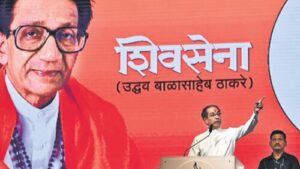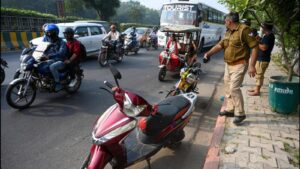Maharashtra: The rise and disintegration of the mighty Maratha empire | Mumbai news

The ancient epic Mahabharat tells us that Lord Krishna’s consort Rukmini was a daughter of the king of Vidarbha, the present-day region around Nagpur in north Maharashtra. It is also this region that has thrown up the oldest archaeological evidence at Daimabad near the river Godavari in Ahmadnagar district. Excavations here have shown evidence of human habitation going back to 2200 BCE, and yielded Chalcolithic copper-bronze rings, houses with courtyards and mud walls, along with arrowheads made of bone.

According to a widely accepted linguistic theory Maharashtra is derived from Maha (great) and Rastrikas who were a local dynasty or tribe ruling over the Deccan region. Spanning a huge area between the Deccan and the western coast, the region has been geopolitically important since the last more than two thousand years. Various dynasties such as the Satvahanas, the Western Satraps, the Guptas, the Rashtrakutas, Chalukyas and the Yadavas ruled over the region before the advent of the Sultanate period at the beginning of the second millennium CE.
Before the establishment of the Mughal empire in the 16th century the region had seen the rise and fall of at least two major kingdoms, the Delhi Sultanate under Mohammad bin Tughlaq who, fearing a Mongol invasion, shifted for a brief period the capital from Delhi to Daulatabad, but his dynasty and the kingdom collapsed in 1347 CE. And, the local Bahmani kingdom with its capital at Gulbarga which also ended after ruling the region for about 150 years in 1518.
The end of the Bahmani sultanate triggered a process of decentralisation under which five smaller kingdoms arose in the Maharashtra -Deccan region: these were the five Deccan Sultanates: Nizamshah of Ahmadnagar, Adilshah in Bijapur, Golkonda’s Qutubshah, Bidar’s Bidarshah and Imadshah at Elichpur (Berar). Mumbai and the surrounding region were ruled by the Sultanate of Gujarat until the Portuguese took over its control through the Treaty of Bassein in December 1534.
The five Deccan Sultanates were engaged in constant warfare with each other. Each of them had a diverse origin and except for the Golconda kingdom, all were founded by erstwhile slaves, two of them Hindu (Ahmadnagar and Berar), while the founder of the smallest sultanate at Bidar may have been a Georgian slave. Notably, the five warring sultanates united to deal a decisive blow to the Vijayanagar empire at the Battle of Talikota in 1565, which eventually led to its demise soon after.
The five Sultanates themselves were conquered by the Mughal empire through long campaigns that lasted till1686-87 with emperor Aurangzeb personally leading some of them.
However, a new local power was beginning to grow under the leadership of Shivaji Bhonsle, who was born in 1630 to Shahji Bhonsle, a military commander who served the Ahmadnagar and Bijapur sultanates, as well as the Mughal empire at different points in his life. Shahji was a jagirdar of Pune and received the jagir of Bangalore after Kempe Gowda III was defeated by Bijapur forces in 1638.
If the Mughals had sought to centralise their rule by decimating or incorporating the Deccan Sultanates, Shivaji, in defiance of his father, was intent on carving out a separate state from Bijapur, his father’s employer.
This process of state formation was unprecedented because it was one of the few such Hindu kingdoms to take birth in a time when the Mughal empire held sovereignty over much of India. With political astuteness, cunning and use of guerilla tactics Shivaji managed to lay the foundation of the Maratha kingdom after winning a spate of battles against both the sultanates and Mughals.
Shivaji took his first steps towards becoming an independent ruler in 1646, when he seized the Bijapur treasure at the Torna fort. Over the following decade he would consolidate his own position by creating, what we would today call and a rainbow alliance of various communities that had been oppressed by the feudal Deshmukhs. He either subdued, won over through alliance or bypassed the Deshmukh houses such as Sawants, Ghorpades, Shirkes, Gharges and Nimbalkar among others and galvanised the village Patils and other peasant communities. Having descended himself from a non-Savarna peasant community Shivaji’s rise was both opposed and resented by the upper caste Hindu houses to the extent that even the Brahmins of his court refused to crown him king. For his coronation Shivaji had to summon pundits from Banaras who established through genealogical craftsmanship his Kshatriya descent and cleared the way for his coronation in 1674.
The Maratha kingdom founded by Shivaji was syncretic; it had Muslims and Portuguese warriors, as well as lower-caste Hindus of the coastal region. He set up a council of eight advisors called the Astha Pradhan comprising of Peshwa or Prime Minister, Finance Minister, Samant or Foreign secretary and Senapati among others. At the time of his death Shivaji had in control more than 250 big and small forts dotting the entire state of Maharashtra as well as some that lay in MP, and Karnataka.
After Shivaji’s death in 1680 his son Sambhaji took over and continued with rapid territorial expansion but within a decade he was ambushed and executed under Aurangzeb’s orders in 1689. Rajaram took over from his half-brother and recaptured many forts from Mughals, one of his most notable victories was the plunder and pillage of the city of Jalna which he burnt to the ground in 1697.
The death of Rajaram in 1700 precipitated a succession war between his widow Tarabai and the son of Sambhaji, Shahu. It was through the stratagems of Shahu’s Prime Minister or Peshwa, Balaji Vishwanath, that Shahu succeeded in getting the Mughals to recognise him as king of the fledgling Maratha kingdom.
In the chaos and instability that followed, emperor Aurangzeb’s death, the Maratha kingdom grew into an empire under the stewardship of its Peshwas Balaji Vishwanath and later his son, Baji Rao I. Baji Rao in particular led the expansion of the kingdom by conquering the various Rajput kingdoms of present-day Madhya Pradesh like Datiya, Chanderi, and Gohad among others.
Between 1720 and 1770 the Maratha empire reached its peak covering a wide area beyond Delhi in the north, to Karnataka in the south.
After the death of the fourth Peshwa Madhav Rao I in 1772, the Maratha empire began to wane and started disintegrating into successor states like the Holkars of Indore, and Scindias of Gwalior, much like the Mughal empire’s disintegration after Aurangzeb’s death in 1707.
The office of Peshwa itself become raison d’etre for bloody court politics leading to assassinations, most notably that of Narayan Rao, the fifth Peshwa and brother of Madhav Rao, by his palace guards. Soon after his uncle Raghunath Rao took over. But his ascension too was challenged by other courtiers led by Nana Phadnavis who sought to install the posthumously born son on Narayan Rao as the new Peshwa.
The intrigue and disunity worsened leading to the defeat of the until recently invincible Marathas as greed for power among Brahmin Peshwas led to self-destruction and defeat in the three Anglo-Maratha wars. The third Anglo-Maratha war (1817-1819) sealed the fate of the Marathas and finally allowed the British East India Company to gain control of entire Indian subcontinent south of the Sutlej river.




